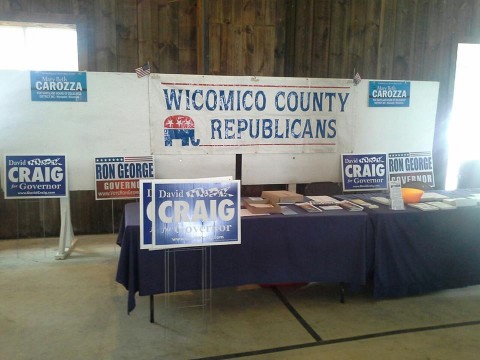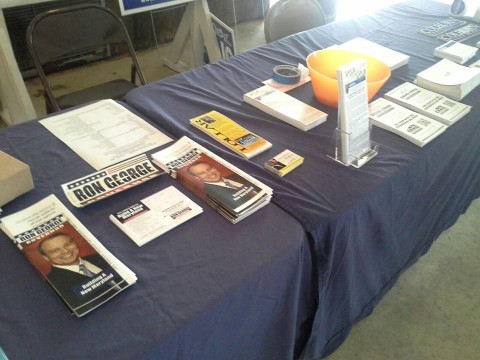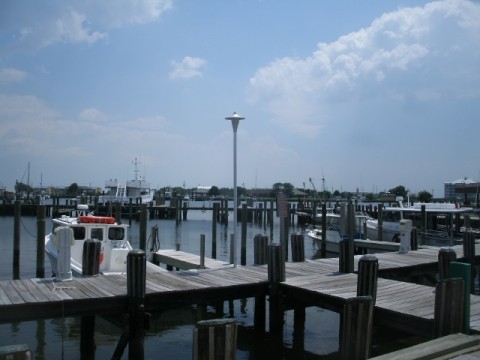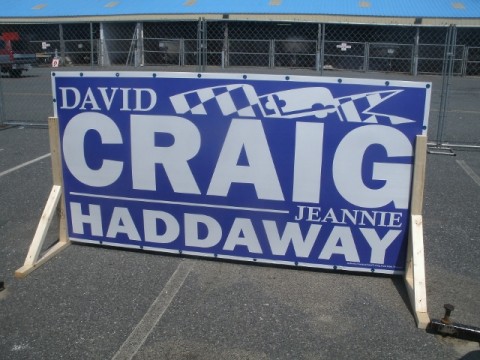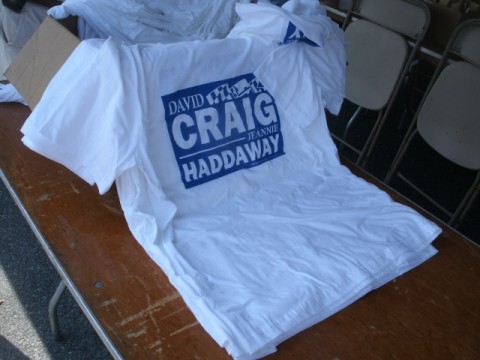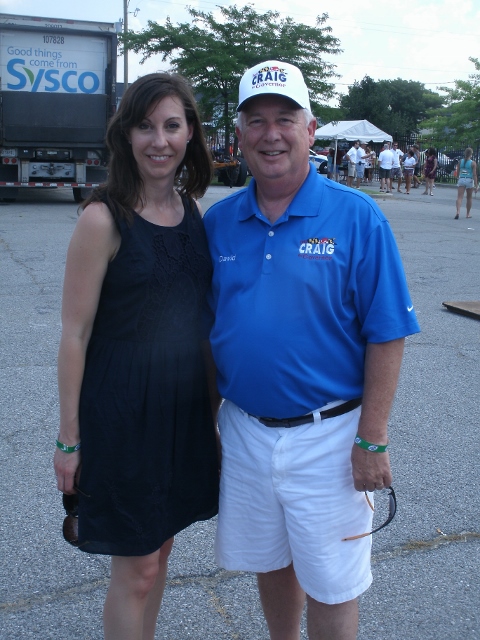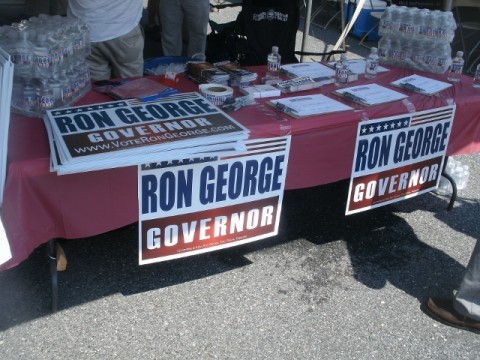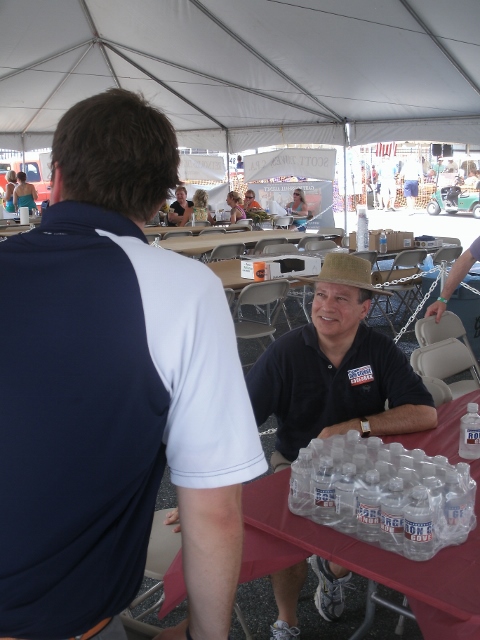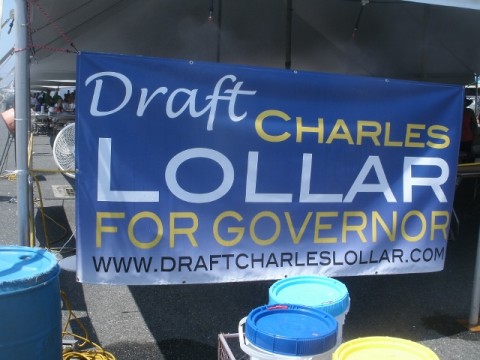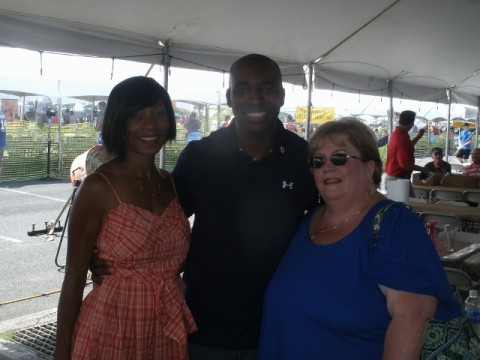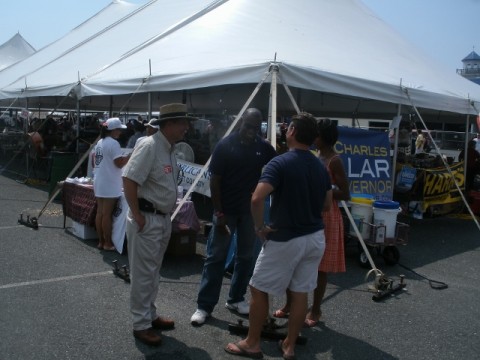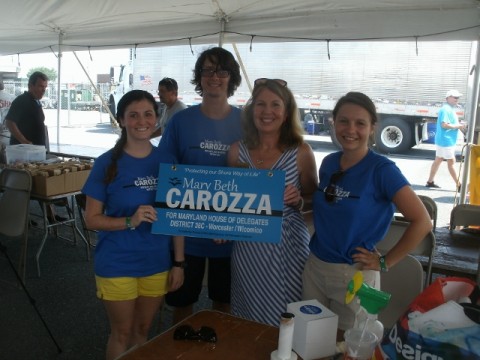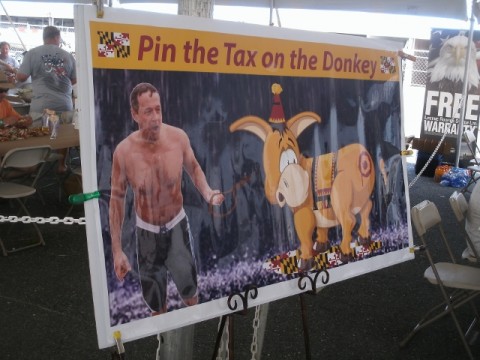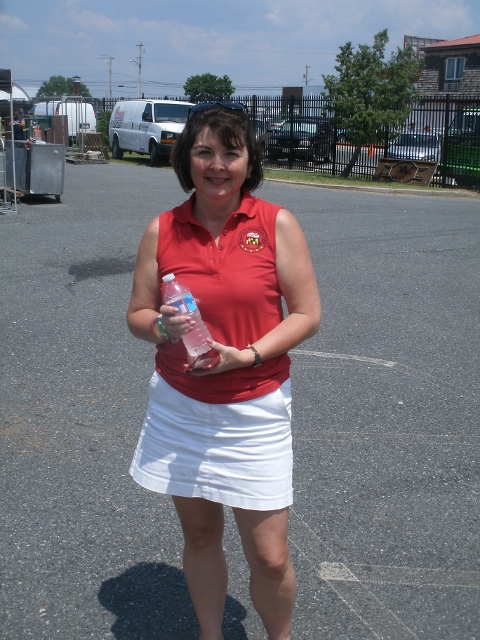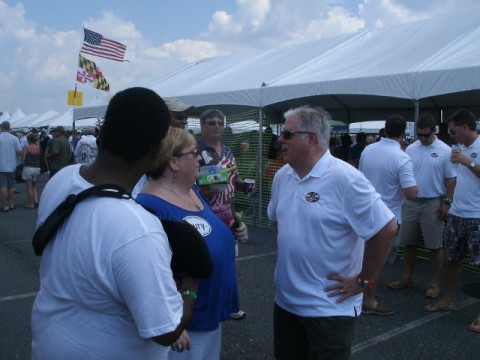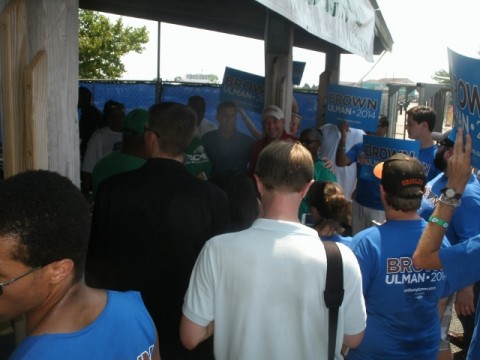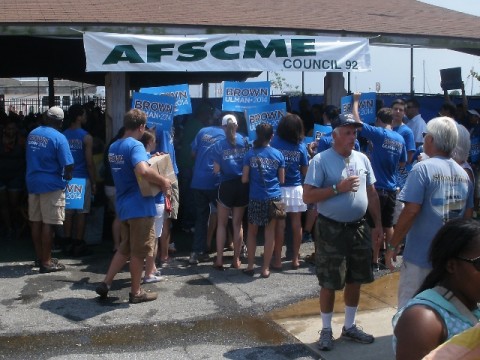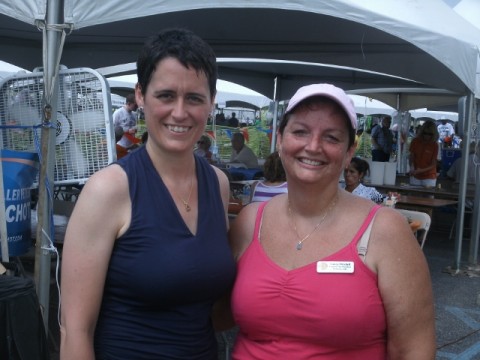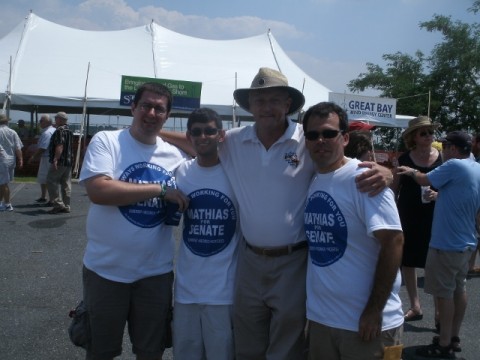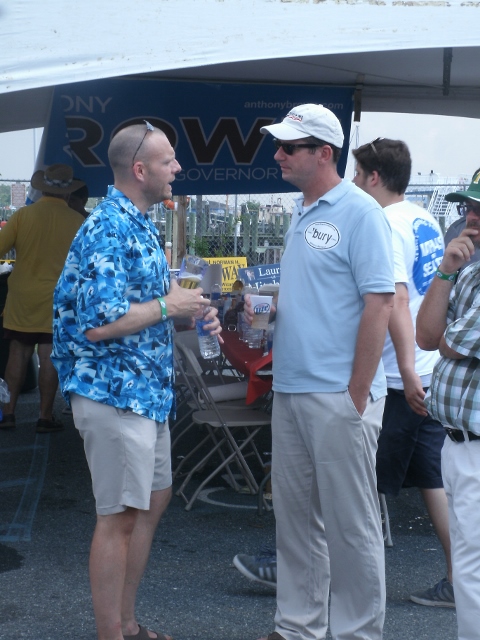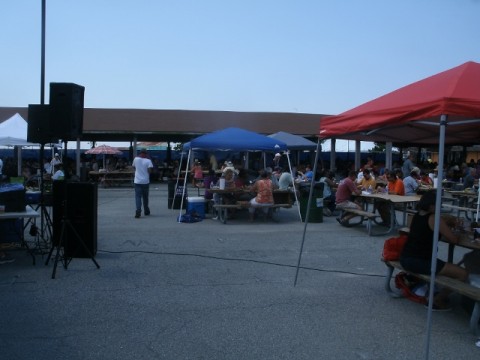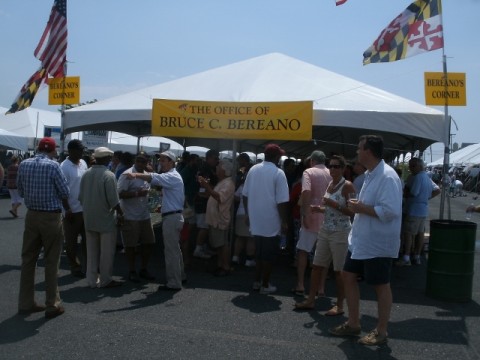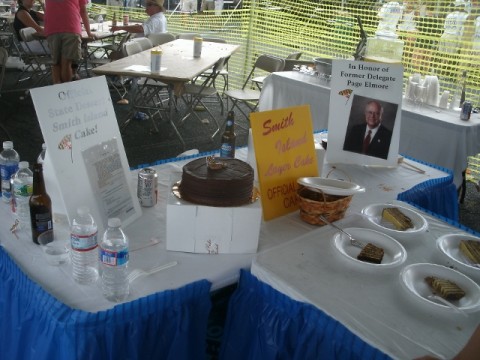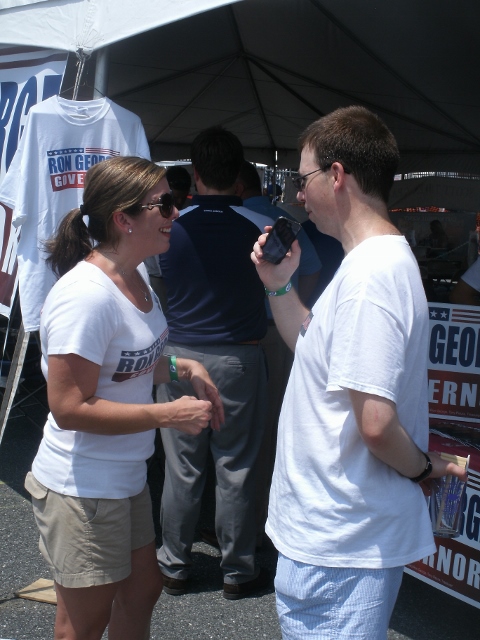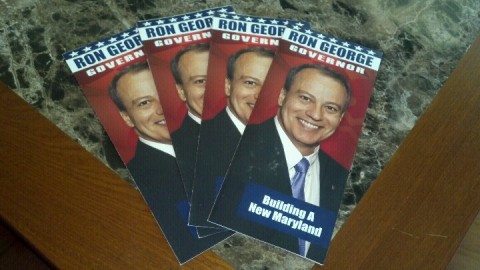I actually started this a couple weeks ago, when writing about Ron George’s last stand, and just added to it here and there every couple days – if only to keep it atop the queue. Regarding Ron, it was unfortunate that such a good candidate couldn’t get much traction in the race.
But as the race comes to an end for three of the four gubernatorial hopefuls, I’m convinced that my initial instinct was correct and there was really only money enough for three candidates. Blaine Young saw this early on and, despite a solid period of fundraising, opted to drop out of the gubernatorial race and focus on a local campaign for the newly-created Frederick County Executive post. “We have a tendency to eat our own,” he said.
To me this is yet another legacy of the Ehrlich era, which in some respects set our party back several years. With the most direct connection to that administration, Larry Hogan was perhaps the second-most natural successor – besides Michael Steele, who took a pass in 2014. More and more I see 2010 as a completely missed opportunity in this state, and its domino effect is hurting us in 2014.
So Hogan starts out about 15 points down, just like Ehrlich ended up in 2010. How does he close the gap?
Out of the box, he’s taking the approach which he used a little bit in the primary: Anthony Brown as incompetent.
Driving up negatives is generally a conventional wisdom play, but there are a couple downsides. First of all, Brown is, well, brown and the inevitable comparison to Republicans picking on Barack Obama will occur. I also don’t see the counter of a positive agenda from the Hogan camp, which seems to be focusing more on undoing things than doing new things.
I mentioned Ron George early on and it was interesting how he accepted his defeat, as a letter to his youngest son Tommy:
Tommy, I lost. But that is okay. Many took my ideas, and I know those ideas will help our state. Your dad is now able to go camping with you and have more time with you, and that alone makes me glad I lost. I can go on trips with you and Mom visiting your nieces and nephew, and I look forward to that also. I did what God asked of me and did my best and that is all we are to do. I never wanted to do anything that took time from you, so I am happy to say I am not a governor but I am Tommy’s dad. Love you, Dad.
Perhaps had Ron been given a do-over, he may have decided to devote full-time to running for governor. Surely he had people to run his business, but while David Craig had a staff to help him do his job as County Executive, Larry Hogan the same for his business, and Charles Lollar was granted extended leave from his duties, Ron had to also function as a Delegate. That was 90 days basically off the trail in the formative part of the campaign. It may be disappointing to me because it was one of two decisions that cost him my vote and endorsement; otherwise Ron had perhaps the best overall platform and he came very close to getting both from me.
But Ron ran the best campaign insofar as staying issue-based and not going off on personal attack tangents.
For David Craig, he pretty much spent the last three years trying for this. Obviously the blogger meeting he had early on didn’t do him much good.
There have been people who opined privately that Craig should have attacked Hogan earlier, just as there are people who believed attacking Charles Lollar was a mistake. I would place myself in the latter camp, but what did Craig in was the lack of money to overcome Larry Hogan’s advantage there. Once Larry got the public financing, the race was over and Craig couldn’t chip away at the double-digit lead.
It’s the Charles Lollar supporters I worry about, as in my opinion they are most likely to stay home in November. Charles tried to convince them otherwise:
Wow, family, what an experience! I can honestly say that the past 16 months have been filled with such excitement and joy as my family has had the chance to meet so many good people across the state of Maryland. I could not be happier with the extended family that I have acquired as a result of this campaign. While the results may have not been exactly what we wanted at least we know that there were many out there who share our vision for a better Maryland and a New Way Forward. From the bottom of my heart I want to thank everyone who played a role in making this such a successful campaign.
As many of you know there is still more work for us to do. A New Way Forward for Maryland is still out there for us to obtain and together we can make this happen. I want to congratulate Larry Hogan on a job well done as well as David Craig and Ron George for successful campaigns of their own.
I look forward to coming together in unity to win the state of Maryland and I urge all of my supporters to do the same and ensure unity within our state across the board.
It makes me wonder what Charles will do with the next few months, although his July 5th event for supporters and volunteers will likely have a lot of clues.
Looking down the ballot a little bit, there were some interesting upsets from both parties.
Two incumbent Senators lost in their primaries as ambitious House members ousted them: Republicans David Brinkley and Richard Colburn were knocked off. By the same token, many of the nine House members who were defeated were victims of redistricting: Republicans Joseph Boteler, Don Dwyer, Donald Elliott, and Michael Smigiel, and Democrats Keiffer Mitchell, Melvin Stukes, Michael Summers, Darren Swain, and Shawn Tarrant. Mitchell and Stukes were drawn, along with winner Keith Haynes, into one Baltimore City district.
In particular, Boteler was one of the good guys, and the reigning monoblogue Accountability Project Legislator of the Year. That district’s voters made a serious mistake by pushing him aside.
Aside from the shocking margin of Addie Eckardt’s victory, the Wicomico County results were pretty much what I expected. Obviously I was disappointed by Muir Boda’s loss but apparently county Republican voters like mushy moderates. If things hold as expected, we will still have a significant GOP majority on County Council but it won’t always govern like one.
It should be noted, though, that my advertisers went 3-1 for the primary. Mary Beth Carozza easily had the most primary votes in District 38C and Chris Adams and Johnny Mautz paced the field in District 37B. Mautz carried three of the four counties, with Adams second in all four (Rene Desmarais won Wicomico County.)
This brings up one of my favorite comments along the way in the campaign, from an old NetRightDaily colleague of mine, Richard Manning. It was in response to a Facebook post I put up to promote this post.
(A)ll those ads along the side pay Michael for his great work. He should be commended that he has created something from nothing that has enough value that people want to advertise on it to reach his readers. That is the essence of the entrepreneurial spirit that those on the right claim to embrace.
So that brings me to the final race, which was my own. I posted this on the soon-to-disappear Facebook page for my campaign:
I’d like to thank my supporters. Looks like I’m going to come up one spot short this time, but with so many good people running I knew I was the most vulnerable incumbent because I only made it by a little bit last time.
So after November it looks like I may have some free time on my hands – or maybe not.
It does look like the Central Committee will have a little more TEA Party influence because Julie Brewington and Greg Belcher got their start as part of that movement, so that’s good.
As I’ve said all along, this will be my last election as a candidate. I was only planning to run this term anyway, and I would have definitely preferred to go out a winner. But I came home and got a hug from my treasurer, who happens to be my fiance. So everything is okay. I lost an election, but elections don’t define me anyway. In fact, in some respects this can be liberating.
Obviously there’s still the prospect of my involvement with the Central Committee, at least as secretary (it can be a non-voting position.) If they wish, I’m happy to stay on in that capacity.
But this will be the last time I have to go through all the hassle of getting a treasurer, filing campaign finance reports, and so forth. In the next few days we’ll close the campaign account, file the necessary paperwork to wind up this committee, and it will be time for a new chapter in political involvement.
So in a few days this (Facebook) page will also go away. Congratulations to the winners and hopefully many of those who tried but fell short will try again. But this will be it for me on the ballot.
Again, I appreciate the kind words from my supporters and thanks to those who voted for me.
A lot of those remarks have appeared on my Facebook page or in e-mails to me. I appreciate the sentiment, but I have an observation on this whole thing.
Of the nine who made it, six were already on the Central Committee and had name recognition for various reasons. I’ve lived in the county for less than a decade and, quite frankly, had the 2006 election featured more aspirants than candidates I probably wouldn’t have won my first term, let alone the second. Look at the three newcomers who won: two are doctors, and the other ran for the House of Delegates in 2010.
On the other hand, two of the other three who lost had been active in Republican circles but had little name recognition otherwise. Tyler Harwood probably knocked on hundreds of doors on behalf of himself and other candidates and was rewarded by finishing last. Jackie Wellfonder had bought signs and cards, and made her way around polling places yesterday to no avail. The gap between us and ninth place suggests that people just went with the names they knew, and that’s sort of a sad commentary.
I’m not going to lie to you and say I’m happy about losing this election, but I knew going in this time that I would have a hard time keeping my spot. I originally figured that only five or six incumbents would run, but with seven that made it really difficult.
So here we are. Even if I’m selected as secretary again (a non-voting secretary and treasurer are allowed) October will be my last meeting as an elected Central Committee member. It would be strange not having something to do on the first Monday of the month, but life changes and so we have to as well.
I didn’t plan on being a Central Committee member my entire life anyway, but now that this election is over my thoughts are on seeing our candidates through and working where I can to improve the process. It may not be completely universal, but one thing I think I’ve achieved over the last eight years is the respect of my peers.


